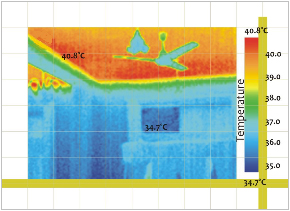This phenomenon, called the urban heat island effect (UHIE), has been well-documented scientifically and can be experienced by anyone traveling from an abundantly planted neighborhood to a sparsely planted one. The urban heat island effect is a phenomenon that is characterized by a measured increase in the ambient air temperature in cities compared to their surrounding vegetated and rural areas. Cities can be 1 to 4°C warmer than surrounding areas.

Figure 1 A typical hot ceiling radiating heat inside the space in a residence in Delhi.



